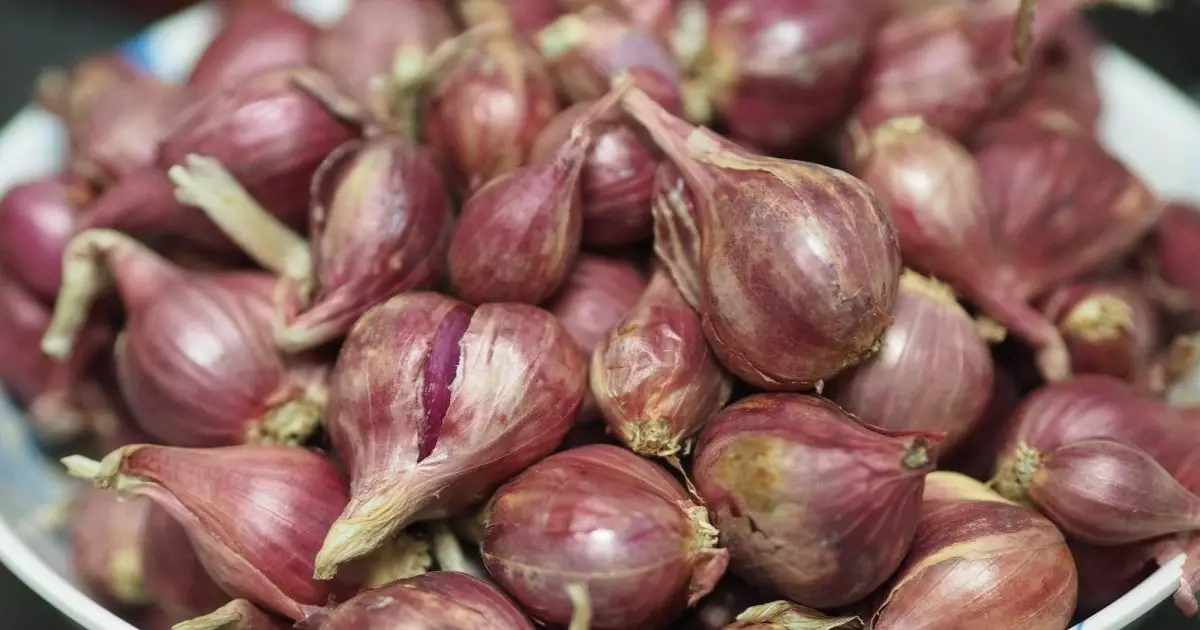Shallots, often hailed as a culinary delight for their subtle taste, hide a lurking danger for our four-legged friends. As enticing as they may be for human consumption, they belong to the Allium family, which makes them a toxic threat to dogs—a reality that many pet owners are blissfully unaware of. Shallots, along with onions, garlic, and leeks, can wreak havoc on your dog’s health, leading to severe repercussions that are too often underestimated. The critical takeaway is simple: dogs should never consume shallots, and as responsible pet owners, we must remain vigilant.
The Chemistry of Toxicity
Why are shallots so toxic to dogs? The answer lies in their chemical composition. When ingested, shallots cause oxidative damage to red blood cells, leaving your dog susceptible to hemolytic anemia. The repercussions of this toxic ingestion start at the cellular level. The chemistry involved reflects a profound disregard for your pet’s unique biology; the compounds that make shallots delicious for humans can be downright toxic for dogs. This means that even small amounts of shallots can initiate a cascade of health issues ranging from gastrointestinal distress to life-threatening anemia.
What’s particularly troubling is that the signs of toxicity may not appear immediately. Often, symptoms such as vomiting, lethargy, and elevated heart rates can take days to manifest. This time delay can signify a tragedy in the making, as pet owners might misinterpret their dog’s temporary fatigue as a benign condition, inadvertently losing precious time in seeking veterinary intervention.
Identifying Symptoms and Taking Action
If your dog consumes shallots, a watchful eye is vital. Symptoms like abdominal swelling, drooling, and gastrointestinal upset should prompt immediate attention. Yet, the deceptive nature of the poison means that just because your dog appears fine initially doesn’t mean they are safe. Knowledge is empowering; recognizing early signs ensures timely action.
The protocol varies widely based on the quantity ingested. A small morsel probably won’t incite an immediate panic, but if your dog devours a whole shallot or a dish laced with them, a call to the vet is non-negotiable. For the sake of clarity, it’s important to note that the risk level escalates significantly for smaller dog breeds, as they have less body mass to combat the toxins.
Household Vigilance: Prevention is Key
Preventing shallot exposure involves a shift in household management. Just as we safeguard our dogs from common human foods like chocolate, we must educate ourselves on the often-overlooked dangers of healthy ingredients like shallots. Awareness should extend beyond just eliminating shallots from your pantry; it also means being critical about what we cook with and ensuring that our canine companions are well-removed from meal preparations.
Consider this: if you’re an enthusiast of dishes laden with shallots for added flavor, it’s imperative to find alternative ways to savor these culinary joys without endangering your pet. The kitchen can be a dangerous place for curious canines, often leading to snatching scraps from counters or tables. Responsibility dictates that we create a safe environment that doesn’t compromise our dog’s health in the name of convenience or negligence.
Seeking Veterinary Guidance
Consulting with a veterinarian is paramount when making dietary choices for your dog. Your vet can provide comprehensive insights not only about shallots but also about other foods that could pose a risk. Neglecting to educate ourselves about food toxicity for dogs can lead to dire outcomes. Investing in this knowledge is a critical component of responsible pet ownership.
Inquiring about symptoms, preventive measures, and overall best practices can provide you with peace of mind. Fostering open communication with your vet is essential for ensuring the well-being of your pet, as what might be safe and delicious for us can become a hidden catalyst for sickness in our beloved dogs.
Being aware of the dangers surrounding shallots offers an opportunity for pet owners to become advocates for their dogs’ health, shifting from ignorance to informed decision-making in the blink of an eye. Embrace that responsibility—your furry friend’s life may depend on it.

